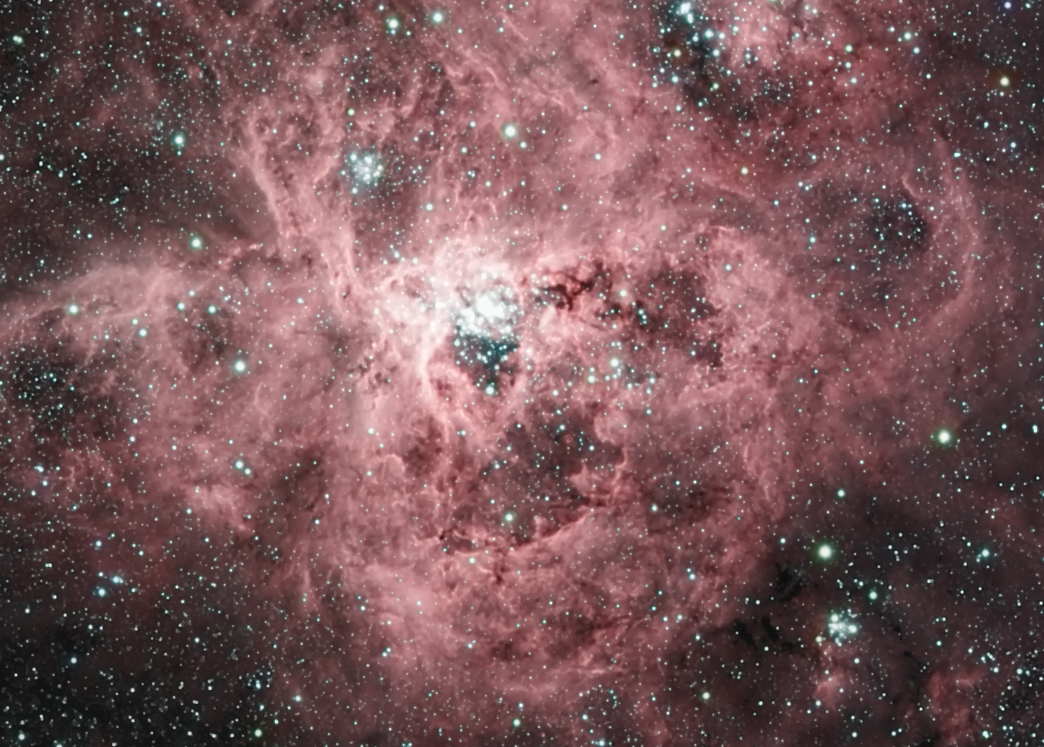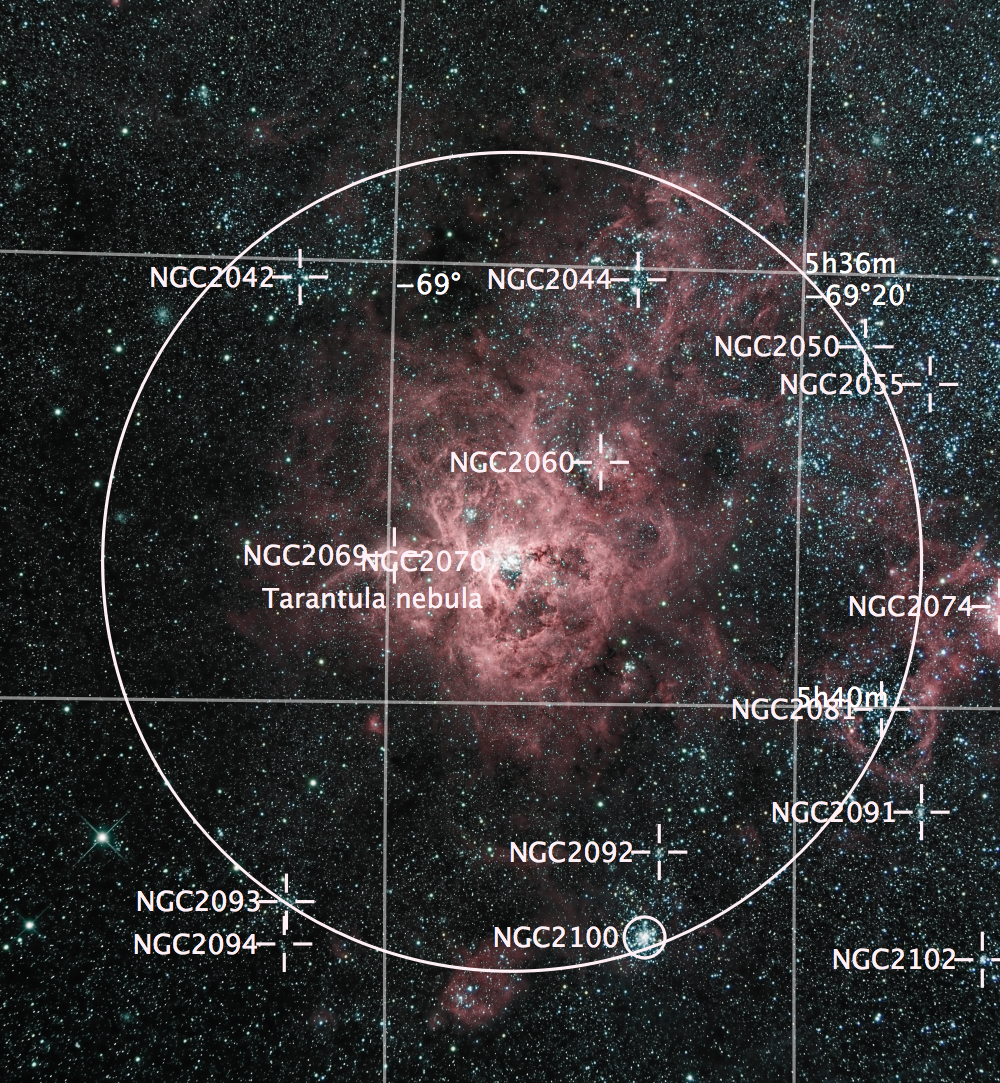

| Rob Hawley's Pages | Almaden Observatory Main Page | Remote Observation Home Page |
One of the jewels of the southern hemisphere is the Large Magellanic Cloud. I used to travel to Costa Rica to get a short glimpse of this. On a longer trip to Australia in 2006 I spent an entire night with detailed charts moving from one object to the next using a portable 10" telescope and my eyes.
When I had the opportunity to start using the Chilescope this was one of the first objects I had in mind. In October it was not in a favorable location until 3 AM, but that was fine with me. I just queued the session and let the scope gather the data.
The full image is shown below. Here is just the central part of the Tarantula at 66% size.

 |
 |
Above is a map in Alt Az as viewed from the Observatory.
The image is presented as North is left.

|
|
| Filter |
Exposure |
|---|---|
| Lum | 19x300 |
| Red | 20x300 |
| Green | 11x300 |
| Blue | 9x300 |
| Halpha | 9x300 |
All images were processed by Pixinsight.
I collected 180 second Lum data as well. I found it difficult to color correct the resulting HDR image so I ended up not using these.
I added Halpha into the image using the Vicent Perez method
HCorrect = Halpha - (R - Med(R)) * 0.5
Red = Red +(HCorrect - Med(HCorrect)) * 8
where 0.5 and 8 were chosen for the desired result.
The bright stars were all A or brighter so I was not able to do a proper
color calibration. I just assumed that R=B=G. Adding Halpha
significantly increased the red channel in the resulting image. It
also converted several dark nebula areas into a more interesting dark red
color.
This image benefited dramatically from using deconvolution. In my home images deconvolution is not usually useful since I work in wide field. The extra magnification of the 500mm scopes introduced enough atmospheric distortion that deconvolution did produce a result.
The image was otherwise processed in my typical way.
Copyrights For Photos (c) 2017 Robert J Hawley Some Rights Reserved.
(c) 2017 Robert J Hawley Some Rights Reserved.